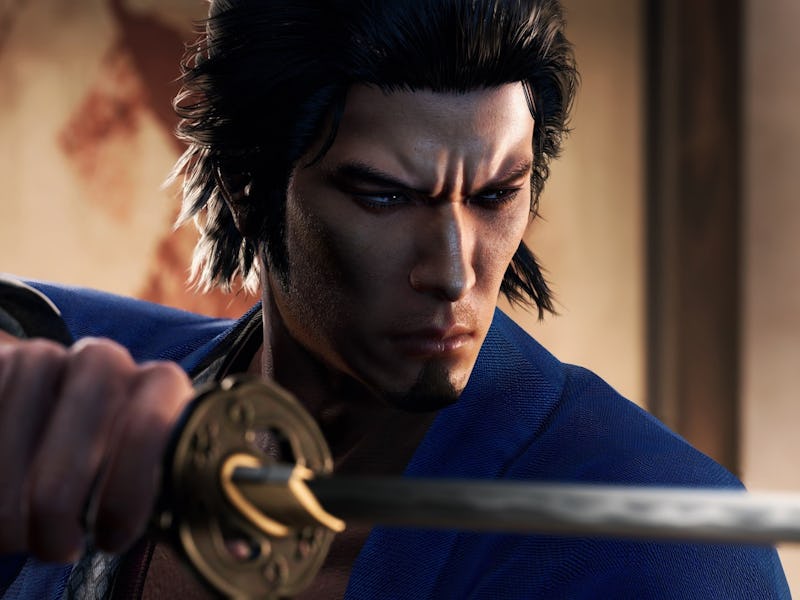Like a Dragon Ishin's Ending, and the True Story Behind It, Explained
The truth of Sakamoto Ryoma.

Like a Dragon Ishin brings a dose of Samurai style to the Yakuza series, settings its story in the Bakumatsu Period (1853-1867) of Japan, a time of great change and upheaval. Across the narrative of Ishin we get to see Sakamoto Ryoma, this game’s version of Kiryu, become more deeply involved in the events that affect all of Japan.
This all comes to a head near the end of the game, when Ryoma and the Shinsengumi face down his brother, Takechi Hanpeita, to decide the very fate of the country itself. We’ll help break down Like a Dragon Ishin’s bombastic ending.
The Real History
All of the major characters in Ishin are based on real historical figures.
The Bakumatsu Period was one of the biggest eras of change in Japan's history, as it marked a shift away from the Tokugawa Shogunate’s rule and restored power back to the Emperor. This period lead directly into the Meiji Restoration, which saw Japan rapidly westernize and innovate, also bringing great change to its social structure.
All of the major characters in Ishin are based on real historical figures, and Sakamoto Ryoma is generally regarded as one of the most influential of the time. Ryoma strongly advocated for democracy and an end to feudalism, and historically he did operate under the alias Saitani Umetaro. Like a Dragon Ishin, obviously, takes great liberties with its storytelling, but the framework of the narrative is based on real events that catapulted Japan into the Meiji Restoration.
Ryoma’s Showdown
With the help of the few remaining Shinsengumi members, Ryoma assaults the fortress built at Tosa.
In the final chapter of Ishin, we finally get to the scene shown at the beginning of the game, as Ryoma and the Shinsengumi try to assassinate the “fake” Sakamoto Ryoma, who turned out to be Takechi Hanpeita stealing his brother’s name. Hanpeita escapes and tells Ryoma he’ll meet him in Tosa, where everything began.
When Ryoma and the Shinsengumi finally arrive in Tosa they find the quaint little town has been turned into an imposing fortress, and the group has to fight through hordes of loyalist forces to finally reach Hanpeita. At this point, Ryoma finally learns the truth as Hanpeita reveals Toya wanted to leave Ryoma in charge of the entire Loyalist party and Tosa. Hanpeita took Ryoma’s name in order to force a confrontation, essentially deciding whose idealogy will win, if Japan will move forward through peace and love or through bloodshed. Either way, the name Sakamoto Ryoma will go down in history.
After a fierce battle, Ryoma comes out victorious, but a new understanding has developed between the two. Ryoma says he “forgives” his brother, and Hanpeita acknowledges that he sees the value in Ryoma’s approach to changing the country. As the siblings watch the sunrise, Yamauchi Yodo suddenly shoots Hanpeita.
Yodo’s Scheme
Like a Dragon Ishin pulls a Final Fantasy, and reveals the true villain in the final moments.
In the final minutes of the game, it’s revealed that Yodo, the daimyo of the Tosa domain, was the one pulling Hanpeita’s strings the whole time. While holding Ryoma at gunpoint the villain reveals his master plan. Yodo will let the British into Japan through Tosa and then sell the country to them, turning it into a colony with a puppet Shogun ruler.
Yodo tries to gun Ryoma down, but after several shots, the Samurai still staggers toward him. Ryoma’s undaunted strength terrifies Yodo, and he’s shortly surrounded by the rest of the Shinsengumi members. Ryoma says the fate of Japan isn’t up to either of them, but to the people of the country. The credits begin as Ryoma violently swings his sword down and ends Yodo.
The Fate of Ryoma and Hanpeita
Unlike Yakuza’s Kazuma Kiryu, Ryoma actually gets a happy ending.
There are a few quick scenes after the credits, with the first showing Katsura talking to a mysterious figure he calls “Yamauchi Yodo,” about how he and Sakamoto Ryoma are responsible for starting the Meiji Restoration.
Katsura reveals the man is Takechi Hanpeita, and says he no longer has a need for the alias “Yodo.” This means Hanpeita assumed the identity of Yodo and used his authority to further Ryoma’s plan.
The next scene shows a frustrated Nakaoka writing in a dark room, as he’s visited by Otose with refreshments. Nakaoka is writing a biography of Sakamoto Ryoma, ensuring that his friend would go down in history as one of Japan’s most influential figures.
The final scene shows that Ryoma is alive and well, hiking atop a mountain with Oryo. The hero has finally received his happy ending, likely living the rest of his life completely off the grid. While we don’t see the fate of any of the other Shinsengumi members, like Okita, the fact that Ryoma survived likely means they did as well.
This article was originally published on